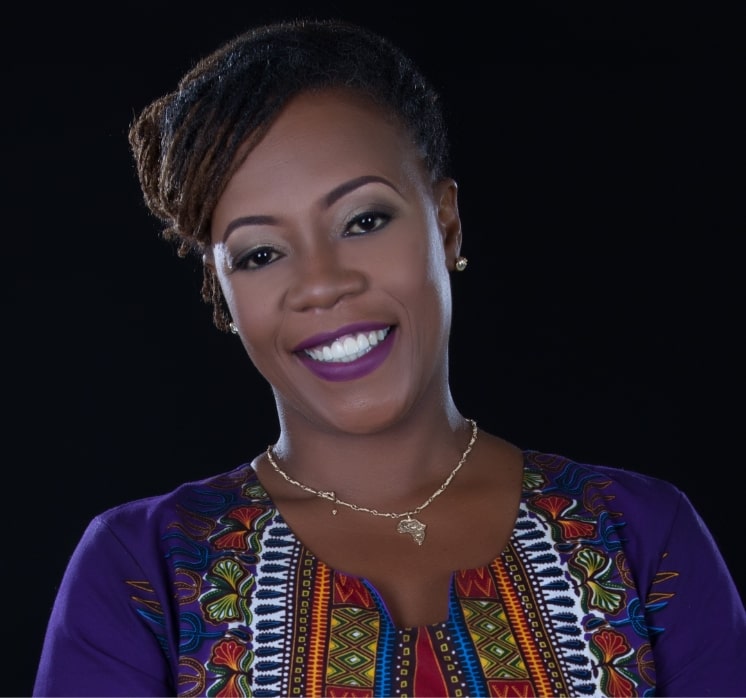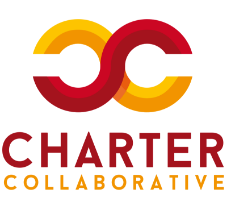
Rasheki Kuykendall
Vice Principal
Roots Public Charter School
Roots Public Charter School
Location: Washington, DC
Year Opened: 1999
Student enrollment: 120
Grades served: PreK3-5th grade
Website: www.rootspcs.org
Student Demographics
Black/African-American: 98%
Hispanic/ Latino: 1%
Two or more races: 1%
Homeless Students: 30%
FRPM/FRPL %: 93%
Students with Disabilities: 6%
ELL/ESL Students: 11%
MY EDUCATIONAL JOURNEY
Growing up in (the urban districts) DC and Chicago, I had the pleasure of being educated by a majority of Black teachers, so I always saw my potential in them. It made such a difference in my educational experience and the way I saw myself, because my teachers saw themselves in me. During high school and throughout my college years, I worked with younger children through the Summer Youth Employment Program and the Boys and Girls Club and discovered my interest in being an educator.
I went to Fisk University, an HBCU, where I developed my own academic program in African American and African History with a concentration in Education. As an undergrad, I studied abroad in Kenya and traveled in Kenya, Zimbabwe, and South Africa. I went to grad school at Ohio State University and traveled to Ghana as a Ford Fellow. I returned to DC for a Doctoral program at Howard University, but I didn’t end up attending. Instead, I applied for a teaching position at Roots.
Roots is a very small, African-centered charter school in Washington, DC. It was founded in 1999 by Dr. Bernida Thompson who also opened an African-centered private school in DC back in 1977. She has been a leader of color for quite a long time and she’s my mentor and a wonderful principal.
I was a founding teacher of Middle School at Roots. I started teaching 4th, 5th, and 6th grades. At Roots, we loop with our students, so I went with them from 4th grade all the way through 8th grade. That was my first teaching experience, which was awesome. The classes were really small and I was able to grow myself in that environment. Having the same students every year helped me learn to connect with students and families and home in on my craft.
In 2006, I received an award from the Milken Family Foundation. They identify outstanding teachers by state based on nominations, and Dr. Thompson nominated me in 2005. I was really honored, because I grew myself as a teacher at Roots. At that time, I had been teaching for 5 years and I felt like I had hit a wall. I knew my students were learning, but I didn’t know if I was meeting all the targets and doing things the right way. For Dr. Thompson to trust me and to be honored in that way was a real esteem booster for me. The award came with a whole network of teachers and a lot of opportunities to continue to learn.
In terms of how I continue to develop myself, I lean into my growth areas. I did a lot of self-development around how to be a good Science teacher, because at Roots we teach all subjects and Science was my weakest area. I loved Science as a kid, so I knew how to provide that joy to the students, but I needed to learn some best practices.
I was the lead middle school teacher for 15 years. This is my 5th year as the Vice Principal. There had never been a Vice Principal at Roots, so I advocated for and created the position. In this role, I’m always looking for ways to bring new ideas like the technology program to the school.
Right now, I’m training myself to be the next principal at Roots in the next 2-3 years. I’m excited about some of the visions I have for Roots, including creating a pipeline of leadership and being able to empower and motivate the teachers. I know it’s going to be a lot of work and a lot of responsibility, but I know I can handle it.
THE IMPACTS OF COVID-19 ON ROOTS
We are like a small village at Roots and we have very strong relationships with our teachers, which helped us deal with the impacts of the pandemic. From March to June, teachers hit the ground running and it was rushed and kind of crazy. We had a lot of time over the summer to plan for this school year. We made sure the teachers were very well steeped in their technology. We made sure all of our students have the resources they need. We provide food to our families that need it.
This year, 90% of our students were returning students, which helped a lot. We try to maintain as much of a sense of normalcy as we can, because we know this time is difficult. There’s a concern around all of the screen time, so we try to limit that as much as possible but also make sure students are getting their instruction. Our teachers are constantly being trained on the platforms we’re using, so they’re getting really good at using those platforms like Google Classroom and Seesaw.
In our pre-primary, because students are so young, the teachers have one-on-ones with them. Students have breakfast and lunch together every day and then they have individualized sessions to hone in on the skills they need. In K-1, the teachers are doing a lot of great things with reading and writing to keep students very engaged and they have strong connections with the parents through Class Dojo. Our teachers share their cell phone numbers with parents, so they’re constantly sending pictures and seeing what families are doing at home. We have great relationships that have had to become even more intentional, because we don’t see each other every day.
Normally in the Fall we’ll have an African-centered masquerade ball instead of Halloween where the kids dress up as heroes/sheroes or ancestors and participate in a parade of stars during which they tell us about who they are representing. We didn’t have that this year, because we couldn’t figure out how to do it on Zoom without it being weird. We did have an autumn festival where the parents came and popped their trunks and they had toys for the kids to play with and hula hoops. The kids were so happy to be back at school and the parents were so happy to see each other. It was just such a good time that they had. I’m glad that they had that, because it was nice to have a sense of community again.
MANATI FELLOWSHIP EXPERIENCE
I always enjoyed the National Charter Collaborative conferences, and being a part of that segued me into Manati. Through the fellowship, I met really good people who challenged a lot of my ideas about being a leader. It was really good to be around established leaders of color, because I’d never had that experience before and to hear their ideas and their passion and how committed they are. It was kind of like, “I want to be like that when I grow up,” because they were older than me in their leadership. I learned a lot just listening to them and by having a safe space to share my personal journey and be vulnerable about my areas of growth. I definitely plan to stay in touch with the other fellows.
Manati was a space of affirmation that allowed me to feel good about being a leader of color. It was very valuable to go to other schools and see how they’re doing things. I also enjoyed the workshops we had and the intent around the emotional part and looking at identity. When we talked about creating equitable spaces, we talked about so many categories beyond just race, and I was able to take a lot of those conversations and apply them to my environment.
Manati allowed me to come back to the school with a new lens and new, fresh ideas. I’ve tried to recreate that safe space, to be clear about my intentions, to see myself in others, to be an active listener, and to incorporate some of the mindfulness activities into staff development workshops.
WHY CHARTER LEADERS OF COLOR MATTER
My idea of student success has expanded. It’s more than just the academics. It’s the whole child, their family, and their community. Student success is being able to feel confident in your pursuit for knowledge, being encouraged and supported, being avid and being okay with being pushed. I want teachers who are okay with pushing students and challenging them to do deep thinking. I’m really invested in our students as though they’re my own children. When children know they have that place in your heart and your spirit, they’ll give you their all.
In places like Chicago and DC, where there are high populations of students of color, it’s important to have leaders of color, just like when we were little it was important to have Black teachers. Back in 1999 when we started Roots, there were several charter schools run by leaders of color, but most of them were closed down and then charter management companies started coming in. For a while, there weren’t a lot of leaders of color in the charter sector. Now, new schools are opening and new, younger leaders of color are coming up. I’m excited to see this new shift happening in the charter sector here in DC.
We know all the data. We know the metrics for us to be a successful school, but at the same time we want our children to be citizens that give back to the community, to understand their place in this world and what their responsibility is. That’s what student success is for a Black child, and when they’re successful we all win. Our kids are so smart and they have so much inside of them. We just have to continue to build their esteem and see us in them.
